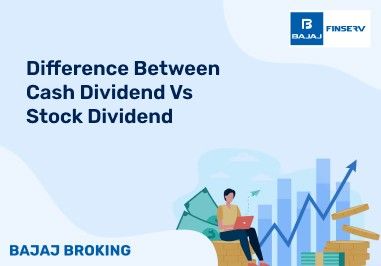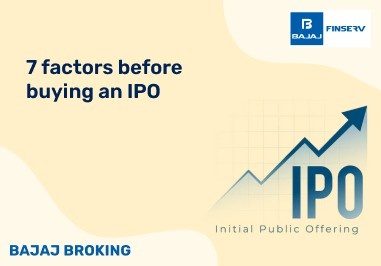When trading in the stock market, managing costs is just as important as making profitable trades. One of the biggest concerns for traders and investors is brokerage fees — the charges levied by brokers for executing trades, whether fixed or as a percentage of the traded value. These costs can quickly add up and eat into potential profits, especially for frequent traders.
This is where a brokerage calculator becomes invaluable. A brokerage calculator is an online tool that helps estimate the total cost involved in making a trade. By using a brokerage calculator, you can plan your trades better, minimise costs, and optimise your investment strategy.
Typically, a brokerage calculator helps you determine the following:
Brokerage Charges – The fee brokers charge for executing trades.
Securities Transaction Tax (STT) – A tax imposed by the government on the total trade value.
Goods and Services Tax (GST) – A tax levied on brokerage and transaction charges.
Stamp Duty – A state-imposed tax on buying and selling securities.
Exchange Transaction Charges – Fees that the NSE and BSE charge.
SEBI Turnover Fees – A small fee collected by the Securities and Exchange Board of India (SEBI).
Let’s explore seven ways a brokerage calculator helps you cut costs and improve your trading efficiency.
1. Accurate Cost Estimation
One of the primary advantages of using a brokerage calculator is that it provides precise cost calculations before executing a trade.
How it Helps:
When you enter the buy price, sell price, quantity, and segment (equity, futures, options, commodities, or currency), the calculator instantly computes the brokerage fees and other deductions.
It eliminates manual errors in calculations, which could lead to misjudging the trade’s actual profitability.
Accurate cost estimation ensures that traders know exactly how much they need to earn to break even or make a profit.
Example:
Imagine you are trading stocks worth ₹1,00,000 with a brokerage fee of 0.05% per trade. A brokerage calculator will show you the exact cost breakdown, ensuring you factor in all expenses before placing an order.
2. Comparison of Brokerage Fees
Brokerage fees vary across different brokers. Some charge a fixed fee per trade, while others follow a percentage-based model. A brokerage calculator allows traders to compare fees and choose the most cost-effective broker.
How it Helps:
Traders can compare brokerage structures across multiple brokers and pick one that aligns with their trading frequency and volume.
It helps traders assess the impact of brokerage fees on profits before committing to a broker.
By identifying a lower-cost broker, traders can save significantly over time, especially if they trade frequently.
Example:
If Broker A charges ₹20 per trade and Broker B charges 0.05% of the trade value, a brokerage calculator will show which option is more cost-effective for different trade sizes.
3. Transparency in Trading Costs
Hidden charges can reduce profitability without traders realising it. A brokerage calculator ensures full transparency by breaking down all costs associated with a trade.
How it Helps:
Provides a detailed cost breakdown that includes brokerage, Securities Transaction Tax (STT), Goods and Services Tax (GST), stamp duty, exchange transaction charges, SEBI turnover fees, and other charges.
Prevents unexpected deductions, allowing traders to make informed decisions.
Helps traders compare expected vs. actual profits with full clarity on deductions.
Example:
If a trader assumes their net profit is ₹5,000 but later finds out that ₹1,000 was deducted in taxes and charges, it could affect their strategy. A brokerage calculator eliminates surprises by offering complete transparency upfront.
4. Optimization of Trading Strategies
A brokerage calculator helps traders fine-tune their trading strategies by allowing them to test different scenarios and select the most cost-efficient approach.
How it Helps:
Traders can test how different entry and exit points impact overall profitability after considering brokerage and charges.
Helps swing traders and day traders assess whether frequent trades are profitable after costs.
Identifies the best trading volume that minimises costs and maximises gains.
Example:
A trader planning a high-volume trade can use the calculator to see if executing one large trade is more cost-effective than multiple smaller trades.
5. Effective Risk Management
Minimising trading costs plays a crucial role in managing risk, especially for traders dealing with small profit margins.
How it Helps:
Helps traders evaluate the real risk-to-reward ratio after including all costs.
Ensures traders are not entering trades where brokerage and charges are too high compared to expected returns.
Assists in selecting stop-loss and target levels based on net profit calculations.
Example:
A trader expecting a ₹2,000 profit might discover through a brokerage calculator that the total cost of the trade is ₹1,500. This means their real profit is just ₹500, altering their risk assessment.
6. Educational Insights
For beginners, understanding brokerage fees and trading charges can be complex. A brokerage calculator serves as an educational tool, helping new traders learn about trading costs in a practical way.
How it Helps:
New traders can learn how different factors impact trading costs by experimenting with different trade sizes and prices.
Helps them make informed decisions before committing real capital.
Educates traders on brokerage structures, government taxes, and other financial charges in a simplified manner.
Example:
A beginner investor may not realise that intraday trading fees are different from delivery trading fees. By using a brokerage calculator, they can understand these differences before making a trade.
7. Time Efficiency in Calculations
Manual calculations of brokerage fees and taxes can be time-consuming and prone to errors. A brokerage calculator automates this process, saving traders valuable time.
How it Helps:
Instantly provides results within seconds, allowing traders to focus on strategy rather than calculations.
Eliminates errors that may arise from complex calculations involving multiple charges.
Helps traders quickly adjust trading plans without manually recalculating every trade scenario.
Example:
Instead of manually calculating brokerage, taxes, and transaction costs for multiple stocks, you can input your trade details into a brokerage calculator and receive instant results.
Conclusion
A brokerage calculator is a powerful tool that helps traders reduce costs, plan trades effectively, and improve profitability. It provides accurate cost estimation, transparency, and comparison features, enabling traders to make well-informed decisions. Whether you are a beginner or an experienced trader, using a brokerage calculator can help you save money and trade more efficiently.
Using it, you can optimise your strategies, manage risks, and ensure that hidden costs don’t eat into your profits. If you haven’t already, start using a brokerage calculator today and take control of your trading expenses!













